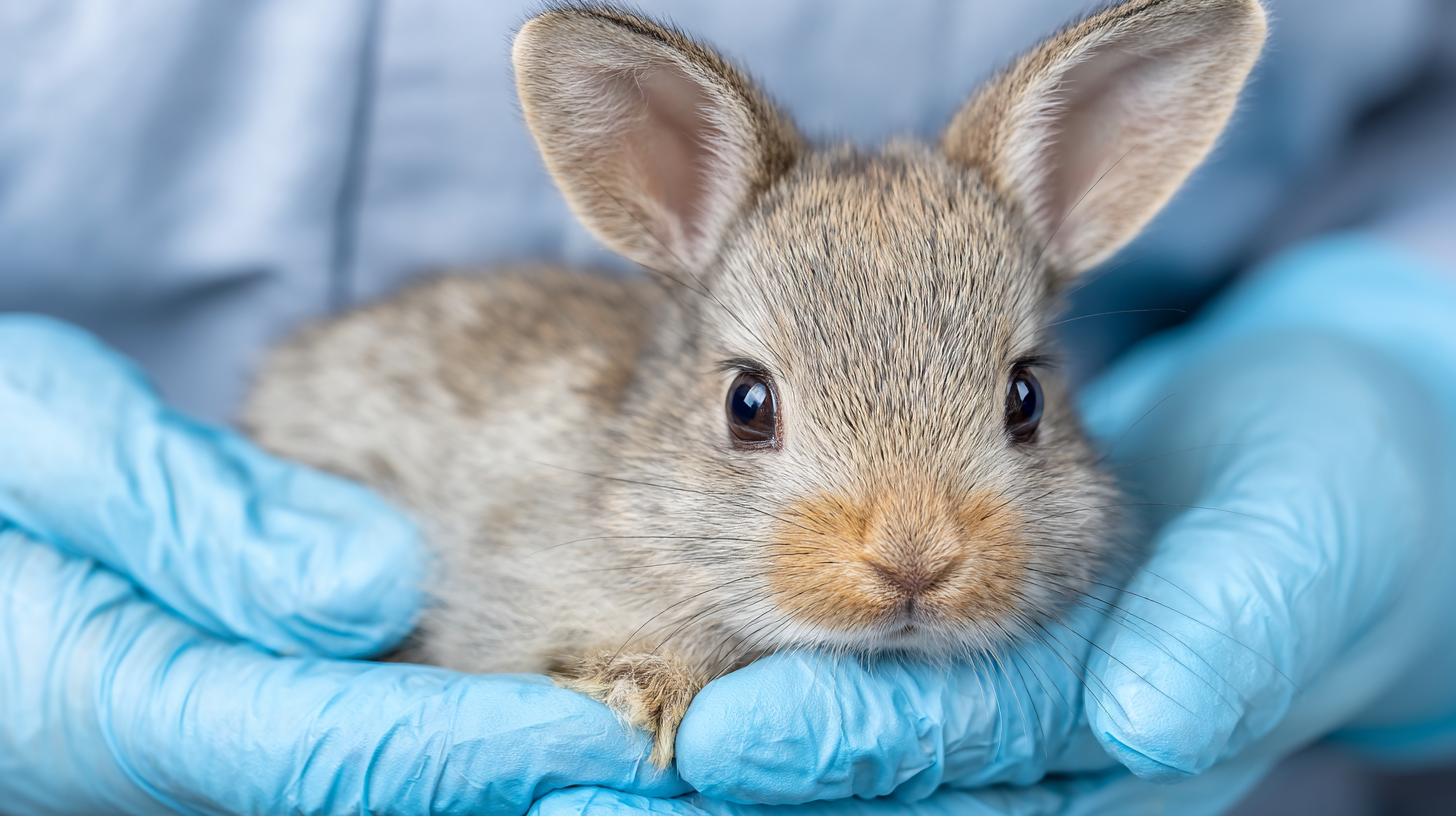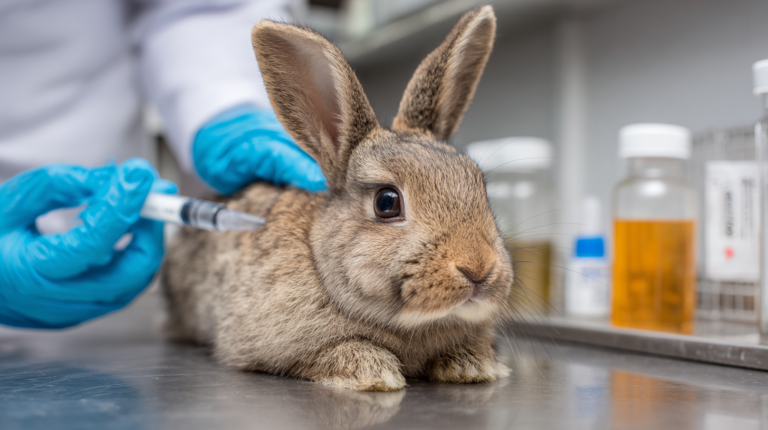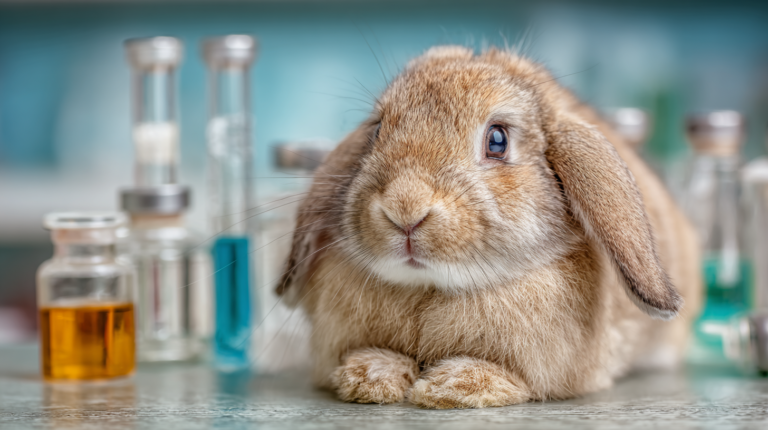Discover essential protection strategies against myxomatosis in rabbits. Learn symptoms, prevention methods, and life-saving tips from veterinary experts.
Table of Contents
When Sarah discovered her beloved Holland Lop, Benny, with swollen eyes and difficulty breathing, she had no idea her rabbit was battling one of the most feared diseases in the rabbit world. Myxomatosis in rabbits is a devastating viral disease that has claimed countless rabbit lives worldwide, yet many pet owners remain unaware of its serious implications until it’s too late.
This highly contagious disease, caused by the myxoma virus, can transform a healthy, active rabbit into a critically ill pet within days. Understanding myxomatosis in rabbits and implementing proper prevention strategies isn’t just recommended—it’s essential for every responsible rabbit owner who wants to ensure their pet’s long-term health and survival.
The Silent Threat to Rabbit Health

Myxomatosis is a severe viral infection that specifically targets rabbits and closely related species. First identified in laboratory rabbits in Uruguay in 1896, this disease has since spread globally, causing significant mortality rates in both wild and domestic rabbit populations. The myxoma virus belongs to the poxvirus family and is transmitted primarily through biting insects, particularly fleas and mosquitoes.
The disease manifests in two primary forms: the classic nodular form and the respiratory form. The nodular form is characterized by the development of skin tumors and swelling, particularly around the eyes, ears, and genitals. The respiratory form, which is more common in some geographic regions, primarily affects the respiratory system and can be more challenging to diagnose in its early stages.
According to recent veterinary studies, myxomatosis has a mortality rate approaching 99% in unvaccinated rabbits, making it one of the most lethal diseases affecting domestic rabbits. This statistic alone underscores the critical importance of understanding and preventing this devastating condition.
The Biological Mechanism Behind Myxomatosis
The myxoma virus attacks the rabbit’s immune system systematically, creating a cascade of symptoms that progressively worsen without intervention. Once the virus enters the rabbit’s system through an insect bite or direct contact with infected material, it begins replicating in the skin and mucous membranes. The virus then spreads through the lymphatic system, causing the characteristic swelling and nodular growths that give the disease its name.
What makes myxomatosis particularly insidious is its ability to suppress the rabbit’s natural immune response. The virus produces proteins that interfere with the host’s interferon production, essentially disabling the rabbit’s primary defense mechanism against viral infections. This immune suppression leaves infected rabbits vulnerable to secondary bacterial infections, which often prove fatal even before the virus itself causes death.
1: Vaccination Programs
The most effective defense against myxomatosis in rabbits is a comprehensive vaccination program. Modern myxomatosis vaccines have proven highly effective, with protection rates exceeding 95% when administered according to veterinary guidelines. These vaccines work by stimulating the rabbit’s immune system to produce antibodies against the myxoma virus before exposure occurs.
Vaccination schedules vary depending on geographic location and local disease prevalence. In areas with high myxomatosis risk, rabbits typically receive their first vaccination at 5-6 weeks of age, followed by annual boosters. Some veterinarians recommend bi-annual vaccination in regions with year-round insect activity or during outbreak periods.
Dr. Jennifer Martinez, a veterinary virologist at the University of California, notes, “Vaccination remains our most powerful tool against myxomatosis. We’ve seen dramatic reductions in infection rates in communities where vaccination programs are consistently implemented.”
The vaccination process itself is straightforward and well-tolerated by most rabbits. The vaccine is administered subcutaneously, typically in the scruff of the neck, and rabbits can usually resume normal activities immediately afterward. Side effects are minimal, with occasional mild swelling at the injection site being the most common reaction.
2: Vector Control and Environmental Management
Since myxomatosis is primarily transmitted through biting insects, controlling these vectors represents a crucial line of defense. Effective vector control requires a multi-faceted approach that addresses both the immediate environment and broader ecological factors that support insect populations.
Mosquito control forms the foundation of vector management. These insects thrive in standing water, making it essential to eliminate breeding sites around rabbit enclosures. Regular inspection and removal of water-holding containers, proper drainage of outdoor areas, and maintenance of clean, flowing water sources significantly reduce mosquito populations.
Flea control presents unique challenges, as these insects can survive in carpets, bedding, and outdoor vegetation for extended periods. Regular vacuuming of indoor areas, washing rabbit bedding in hot water, and treating outdoor spaces with appropriate flea control products help maintain a flea-free environment.
The use of fine-mesh screening around outdoor rabbit enclosures provides physical barriers against flying insects. These screens should have openings no larger than 1mm to effectively exclude mosquitoes and other potential vectors. Indoor rabbit housing should include window screens and door seals to prevent insect entry.
Professional pest control services can provide valuable support in managing vector populations, particularly in areas with high insect activity. These services often employ integrated pest management approaches that combine biological, physical, and chemical control methods for optimal effectiveness.
3: Quarantine and Biosecurity Measures
Implementing strict quarantine and biosecurity protocols helps prevent the introduction of myxomatosis into rabbit populations. These measures are particularly crucial for rabbit breeders, rescue organizations, and multi-rabbit households where disease transmission can occur rapidly.
New rabbit acquisitions should undergo a minimum 21-day quarantine period in a separate facility, away from existing rabbits. This isolation period allows time for potential infections to manifest and be identified before introducing the new rabbit to the established population. During quarantine, new rabbits should be monitored daily for signs of illness, including changes in appetite, behavior, and physical appearance.
Biosecurity measures extend beyond quarantine to include proper hygiene protocols for handlers and equipment. Hand washing before and after rabbit contact, using separate feeding and cleaning equipment for quarantined animals, and maintaining clean clothing when moving between rabbit areas help prevent disease transmission.
Visitor restrictions play an important role in maintaining biosecurity. People who have recently been exposed to unknown rabbits or visited areas with potential disease outbreaks should avoid contact with healthy rabbits for at least 48 hours. This precaution helps prevent inadvertent disease transmission through contaminated clothing or equipment.
Record-keeping supports effective biosecurity by tracking rabbit movements, health status, and potential exposure events. Detailed records enable rapid response to disease outbreaks and help identify potential sources of infection.
4: Early Detection and Symptom Recognition
Recognizing early symptoms of myxomatosis can mean the difference between life and death for affected rabbits. The disease progresses rapidly, often proving fatal within 10-14 days of infection, making early detection and intervention critical.
Initial symptoms often appear subtle and can easily be mistaken for minor health issues. These early signs include decreased appetite, lethargy, and slight changes in behavior. Rabbits may become less active, show reduced interest in their surroundings, and exhibit altered grooming patterns.
As the disease progresses, more distinctive symptoms emerge. Conjunctivitis, characterized by red, swollen, and discharge-producing eyes, is one of the most recognizable signs. The swelling often becomes so severe that rabbits cannot open their eyes, leading to difficulty finding food and water.
Respiratory symptoms develop as the virus affects the mucous membranes of the nose and throat. Rabbits may exhibit labored breathing, nasal discharge, and audible respiratory distress. These symptoms often worsen rapidly and can lead to secondary bacterial infections.
Skin lesions and nodular growths typically appear 3-5 days after initial infection. These lesions most commonly develop around the eyes, ears, nose, and genital areas. The nodules start small but can grow significantly, causing discomfort and interfering with normal bodily functions.
Temperature monitoring provides valuable diagnostic information. Infected rabbits often develop fever in the early stages of disease, followed by hypothermia as the condition progresses. Regular temperature monitoring can help identify infections before visible symptoms appear.
5: Immediate Response and Treatment Protocols
While no specific cure exists for myxomatosis, immediate veterinary intervention can improve survival outcomes and reduce suffering. The key to successful treatment lies in supportive care that maintains the rabbit’s strength while the immune system attempts to fight the infection.
Fluid therapy represents the cornerstone of supportive treatment. Dehydration occurs rapidly in infected rabbits due to decreased water intake and increased fluid losses. Subcutaneous or intravenous fluid administration helps maintain proper hydration and supports vital organ function.
Nutritional support becomes critical as infected rabbits often stop eating due to oral lesions and general malaise. Force-feeding with appropriate rabbit nutrition supplements, provided under veterinary guidance, helps maintain energy levels and supports immune function. Soft, easily digestible foods may be more readily accepted by affected rabbits.
Antibiotic therapy, while not effective against the virus itself, helps prevent secondary bacterial infections that commonly complicate myxomatosis cases. Broad-spectrum antibiotics are typically prescribed to address the most common bacterial complications.
Pain management improves quality of life for affected rabbits. Anti-inflammatory medications can reduce swelling and discomfort, making it easier for rabbits to eat, drink, and move around. Pain relief also reduces stress, which can further compromise immune function.
Environmental modifications support recovery efforts. Providing a quiet, stress-free environment with appropriate temperature control helps reduce additional stresses on the rabbit’s compromised system. Easy access to food and water, along with comfortable bedding, supports the rabbit’s recovery efforts.
Geographic Distribution and Risk Factors
| Risk Factor | Risk Level | Prevention Method | Effectiveness |
|---|---|---|---|
| Mosquito Exposure | Very High | Vector control, screens, elimination of standing water | 85-90% |
| Flea Infestation | High | Regular flea treatments, environmental cleaning | 80-85% |
| Outdoor Housing | Very High | Vaccination, secure hutches, insect barriers | 95%+ with vaccination |
| Contact with Wild Rabbits | Extreme | Physical barriers, quarantine protocols | 90-95% |
| Contaminated Equipment | Medium | Regular disinfection, biosecurity measures | 95%+ |
| Seasonal Outbreaks | High | Annual vaccination, increased vigilance | 95%+ with proper vaccination |
| Geographic Location | Variable | Area-specific prevention strategies | Depends on local protocols |
Understanding the geographic distribution of myxomatosis helps rabbit owners assess their local risk levels and implement appropriate prevention strategies. The disease has established itself in most regions with significant rabbit populations, though prevalence varies considerably based on climate, vector populations, and local prevention efforts.
European countries have experienced recurring myxomatosis outbreaks since the 1950s, with seasonal patterns typically correlating with insect activity. The United Kingdom, France, and Germany have implemented comprehensive vaccination programs that have significantly reduced infection rates in domestic rabbit populations.
North American distribution shows regional variation, with higher prevalence in areas with warm, humid climates that support year-round insect activity. The Pacific Northwest and southeastern United States have reported higher infection rates compared to arid regions with limited insect populations.
Australia presents a unique case, as myxomatosis was deliberately introduced in 1950 as a biological control agent for wild rabbit populations. This history has created a complex epidemiological situation where domestic rabbits face constant exposure risk from infected wild populations.
Climate change is altering traditional myxomatosis distribution patterns. Warmer temperatures and changing precipitation patterns are expanding the range of vector insects, potentially increasing disease risk in previously low-risk areas. These changes underscore the importance of maintaining vigilance regardless of historical local disease patterns.
The Economic Impact of Myxomatosis on Rabbit Ownership
| Disease Stage | Timeline | Primary Symptoms | Severity Level | Action Required |
|---|---|---|---|---|
| Incubation | 1-3 days | No visible symptoms, virus replicating | Asymptomatic | Monitor closely, maintain quarantine |
| Early Stage | 3-5 days | Mild eye discharge, slight lethargy | Mild | Immediate veterinary consultation |
| Progressive | 5-7 days | Swollen eyelids, conjunctivitis, fever | Moderate | Emergency veterinary treatment |
| Advanced | 7-10 days | Facial swelling, difficulty eating, breathing issues | Severe | Critical care, possible euthanasia consideration |
| Terminal | 10-14 days | Complete facial distortion, unable to eat/drink | Critical | Humane euthanasia typically recommended |
| Acute Form | 48-72 hours | Rapid onset, sudden death without visible symptoms | Fatal | Post-mortem diagnosis only |
The economic consequences of myxomatosis extend far beyond individual pet losses to impact the broader rabbit industry. Understanding these costs helps emphasize the value of prevention investments and supports evidence-based decision-making regarding protection strategies.
Direct veterinary costs for treating myxomatosis cases can range from $200 to $800 per rabbit, depending on the severity of symptoms and duration of treatment. These expenses often prove futile, as the high mortality rate means that significant resources are invested with limited success prospects.
Preventive care costs, including vaccination programs, typically range from $25 to $50 per rabbit annually. When compared to treatment costs and potential losses, prevention represents exceptional value and economic efficiency.
Commercial rabbit operations face additional economic pressures from myxomatosis outbreaks. Quarantine requirements, increased biosecurity measures, and potential market access restrictions can impact profitability significantly. Some operations have reported losses exceeding $10,000 during serious outbreaks.
The rabbit showing and breeding communities experience unique economic impacts. Canceled shows, breeding program disruptions, and reduced breeding stock values can affect participants’ investments and long-term planning. These impacts often extend beyond immediate financial losses to include reduced genetic diversity and breeding program setbacks.
Psychological and Emotional Considerations for Rabbit Owners
The emotional toll of myxomatosis extends beyond the immediate loss of a beloved pet. Understanding and addressing these psychological impacts helps rabbit owners cope with the disease’s effects and make informed decisions about future rabbit ownership.
Guilt and self-blame commonly affect owners whose rabbits develop myxomatosis. Many owners question whether they could have prevented the infection or provided better care. These feelings are natural but often unfounded, as myxomatosis can affect even well-cared-for rabbits in appropriate environments.
Anxiety about future pets represents another common emotional response. Owners may hesitate to acquire new rabbits due to fear of recurring infections. This anxiety can be addressed through education about effective prevention strategies and support from veterinary professionals.
Support networks play crucial roles in helping owners cope with myxomatosis experiences. Online communities, local rabbit clubs, and veterinary counseling services provide valuable resources for processing grief and planning future pet ownership decisions.
The decision to euthanize severely affected rabbits presents particularly challenging emotional situations. Understanding that humane euthanasia can prevent suffering helps owners make difficult but compassionate choices when treatment options are limited.
Research and Future Developments
| Time Frame | Diagnostic Method | Treatment Approach | Expected Outcome | Owner Action |
|---|---|---|---|---|
| First 24 Hours | Clinical examination, symptom assessment | Immediate isolation, fluid therapy | Diagnosis confirmation pending | Emergency vet visit, quarantine setup |
| 24-48 Hours | PCR testing, blood work | Supportive care, antibiotics for secondary infections | Treatment plan established | Follow veterinary instructions, monitor closely |
| 48-72 Hours | Serological tests, tissue samples if needed | Pain management, nutritional support | Disease progression assessment | Maintain quarantine, assist with feeding |
| 3-5 Days | Confirmation of diagnosis, strain identification | Intensive supportive care, eye treatments | Critical period for recovery | Daily health monitoring, medication compliance |
| 5-7 Days | Disease severity assessment, prognosis evaluation | Advanced supportive measures or palliative care | Recovery unlikely if severe symptoms present | Difficult decisions may be required |
| 7-10 Days | Monitoring for complications, secondary infections | Comfort care, quality of life assessment | Humane euthanasia often considered | Emotional support, end-of-life decisions |
| 10+ Days | Rare survivors require ongoing monitoring | Long-term rehabilitation if applicable | Permanent immunity if survived | Extended recovery care, prevent reinfection |
Ongoing research into myxomatosis continues to expand our understanding of the disease and develop improved prevention and treatment strategies. These efforts offer hope for enhanced rabbit protection and reduced disease impacts in the future.
Vaccine development research focuses on improving efficacy and duration of protection. Scientists are investigating new vaccine formulations that could provide longer-lasting immunity and reduce the frequency of booster requirements. These advances could improve compliance with vaccination programs and reduce overall disease risk.
Genetic resistance research examines natural variations in rabbit susceptibility to myxomatosis. Some rabbit populations have demonstrated greater resistance to infection, and understanding these genetic factors could lead to breeding programs that enhance natural immunity.
Antiviral drug development represents an exciting frontier in myxomatosis research. While no specific antiviral treatments currently exist, several compounds show promise in laboratory studies. These drugs could provide treatment options for infected rabbits and reduce mortality rates.
Vector control innovations explore new approaches to managing disease transmission. Research into biological control agents, improved insecticides, and environmental management strategies could enhance existing prevention programs.
Building a Comprehensive Protection Plan
Developing an effective myxomatosis protection plan requires integration of multiple strategies tailored to specific circumstances and risk levels. This comprehensive approach maximizes protection while considering practical constraints and individual rabbit needs.
Risk assessment forms the foundation of any protection plan. Factors to consider include geographic location, local disease prevalence, housing arrangements, and exposure to wild rabbit populations. High-risk situations may require more intensive prevention measures, while low-risk environments might allow for more relaxed approaches.
Vaccination scheduling should align with local disease patterns and veterinary recommendations. In areas with seasonal disease outbreaks, timing vaccinations to precede peak risk periods provides optimal protection. Year-round risk areas may require different scheduling approaches.
Environmental management plans should address specific local vector populations and breeding sites. Regular property assessments help identify and eliminate potential problem areas before they contribute to disease transmission.
Emergency response protocols ensure rapid action if myxomatosis is suspected. These protocols should include veterinary contact information, isolation procedures, and decision-making frameworks for treatment and euthanasia considerations.
Myxomatosis FAQ Hub
Interactive answers to your most important questions
For more expert pet care tips and product recommendations, visit BlithePet.com — your trusted source for pet wellness.
Conclusion
Myxomatosis in rabbits represents one of the most serious threats to rabbit health, but armed with knowledge and proper prevention strategies, rabbit owners can effectively protect their beloved pets. The five life-saving protection strategies outlined in this article—vaccination programs, vector control, biosecurity measures, early detection, and immediate response protocols—provide comprehensive defense against this devastating disease.
Remember that prevention is always more effective and economical than treatment. Regular vaccination, combined with proper environmental management and vigilant health monitoring, creates multiple layers of protection that significantly reduce your rabbit’s risk of contracting myxomatosis.
The key to successful myxomatosis prevention lies in consistency and commitment to these protective measures. By implementing these strategies and maintaining regular veterinary care, you can provide your rabbit with the best possible protection against this serious disease.
Have a similar experience with your pet? Share it in the comments below!




